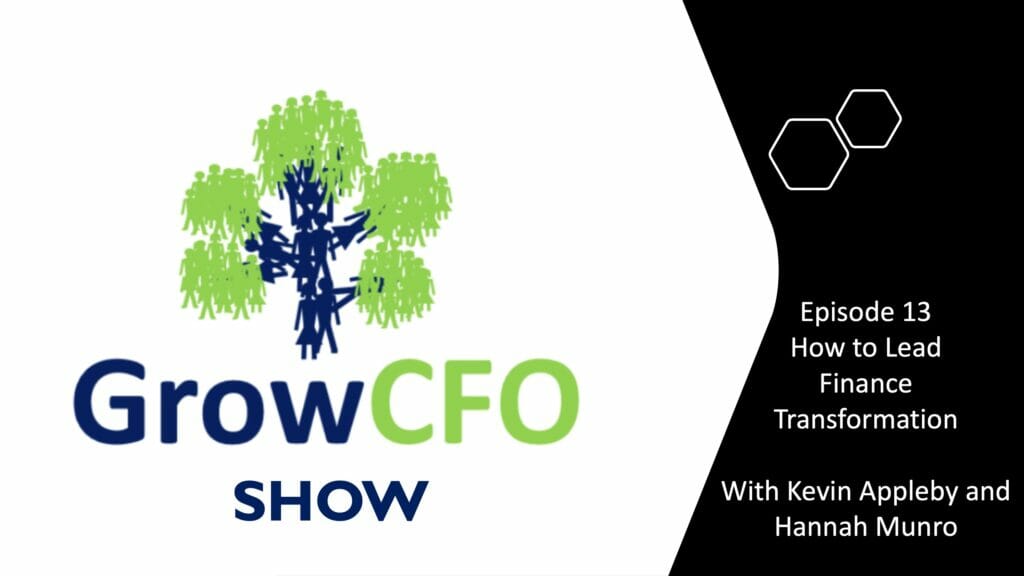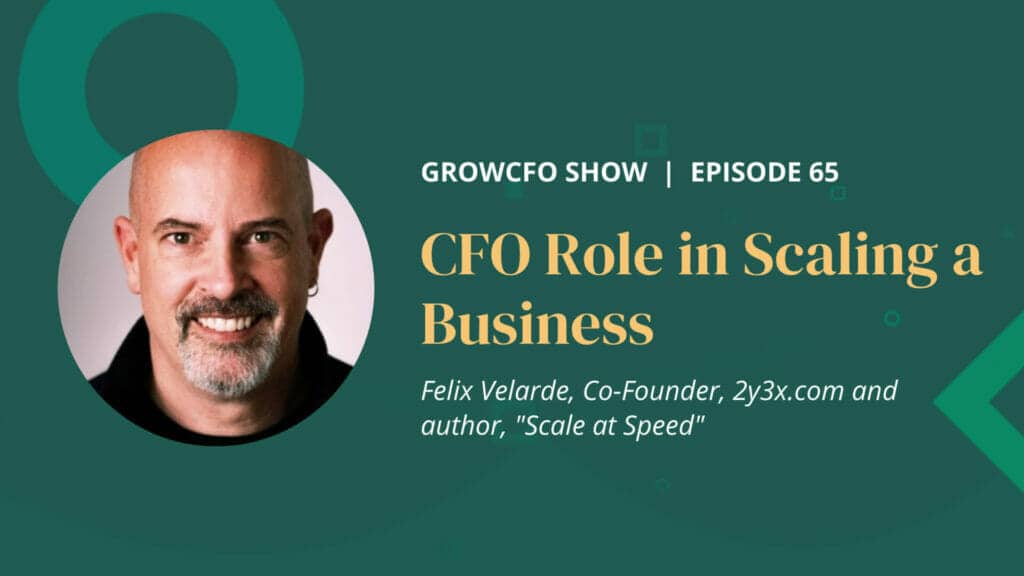#13 How to Lead Finance Transformation with Hannah Munro


Hannah Munro is managing director of Itassolutions and host of CFO 4.0 Podcast. Hannah has over 10 years experience helping CFOs drive finance transformation and reshape finance functions. We look at what you need to do as a CFO to lead a successful finance transformation
There are three elements to finance transformation: People, Process & Systems
Hannah Munro has a background in analytics and process design and not in technology She believes that the key to a successful transformation is to make sure you don’t concentrate solely on the technology. You can have the best technology in world, but if you don’t have good processes and motivated people then your project won’t get anywhere.
Finance transformation is driven with a good change process
If you want to deliver a successful finance transformation then you need to understand how to lead change. John P Kotter outlines an 8 step process in his book leading change.
The 8-Step Process for Leading Change was cultivated from over four decades of Dr. Kotter’s observations of countless leaders and organizations as they were trying to transform or execute their strategies. He identified and extracted the success factors and combined them into a methodology, the award-winning 8-Step Process for Leading Change.
- Create a sense of urgency
- Build a guiding coalition
- Form a strategic vision
- Enlist a volunteer army
- Enable action by removing barriers
- Generate short term wins
- Sustain wins
- Institute change
If you want to find out more about Kotter here’s a great article
Create a sense of urgency for finance transformation
A sense of urgency or a burning platform needs to underpin all change. If you don’t have a burning platform for making your finance transformation then its unlikely to happen. Recently we’ve seen remote working mean on premise accounting solutions are no longer viable. This has given an urgency to adopt cloud based systems.
If you want to transform then something needs to motivate change. Ask yourself whats driving the urgency? If you have no urgency you will have no motivation.
Sometimes that lack of urgency means necessary change doesn’t happen. In the podcast Kevin recalls his employer growing by acquisition but failing to consolidate the back office. Once the need to consolidate became urgent it was too late to do it. The business was already losing too much money and collapsing fast.
Build a Guiding Coalition that extends beyond finance
You might be transforming finance, but you need to look further. The problem often sits outside finance. Make sure there is representation from across the business, not just from the finance team. You will likely have to change processes that significantly impact on the way your finance team operates. Many of those processes won’t be owned by finance and will be driven by the rest of the business.
You can start by identifying capable, influential, and critical allies from across your business. These people are your change oversight team.
Make sure finance transformation aligns with a strategic vision
Build a picture of what the future looks like after the finance transformation is implemented.
Your picture of what the organisation can become is both a future that looks appealing and sensible. If it isn’t, then it will be hard for the leaders to sustain commitment to the change effort. In this step, you must maintain a balance between setting organisational direction independently and collaborating with the guiding coalition.
A strategic case for change is a key element of any business case. Poor finance solutions can hinder the wider business strategy. The system you choose for finance needs to enable wider business processes so you need to ensure the technology is a strategic fit with other business systems.
Enlist a volunteer army
Can you communicate your vision effectively? You must capture the hearts and minds of the employees and managers who are necessary to implement this change. With simple messaging that is repeated effectively in different formats, you can help the rest of the organisation to understand and accept the need for change and become part of it.
You will need to involve as many people as possible. Can you give your people the freedom to build the solution? They will understand the issues better than you do, they deal with them every day. They will also accept a solution they designed themselves much better than one in which they had no say.
You can’t expect your finance team to have all the skills to come up with the best solution. They will need guidance and help. Make sure you give them all the support they need. If you seek external help then make sure your people aren’t excluded from the solution design.
Enable action by removing barriers to finance transformation
This is a series of actions to remove obstacles that do not support your change vision.
At this point of the change journey, you are squarely in the implementation phase. You are actively working with the rest of the organization to make changes to the existing processes, procedures, and organisational structures.
People often assume there are barriers where there are none. Quite often things get done in a certain way, or certain processes exist when there is no real reason for it. Things often happen in a certain way because of history, not because of need. Keep asking why? Why do you do that?
Give people an incentive to do things differently, a reason to change. If you want a system that relies on electronic invoices give your suppliers a strong reason not to send paper. You have many tools art your disposal. You could offer better payment terms for electronic invoices.
Generate short term wins
Complex goals are difficult to achieve and take time. The change will often stall if it takes too long to generate benefit. Some quick wins can generate a lot of goodwill. Are there any actions you can prioritise that might give short term payback?
You should try to make changes to processes ahead of technology. Better processes will make it easier for you to go forward. if you cut out unnecessary processes and simplify then you can often generate instant benefits. Eliminating unnecessary process steps will make peoples lives easier, save time and reduce cost.
When your people see immediate benefits they will be motivated to go further.
Sustain wins
look beyond the low-hanging fruit of the short-term wins to tackle other more difficult initiatives. This step serves two purposes. First, it prevents the organisation from going back to its old way of doing things and second it combats continuing resistance to change.
Most finance transformations fail to achieve the benefits they promised. Most ERP implementations don’t pay back the investment made in them. Beyond the quick wins you must remember why you initiated the finance transformation in the first place. The big wins are harder and are easier to lose sight of. When you are in the midst of putting a system in with a very short time window then delivering the project becomes more important than delivering the savings. Focus often moves from realising benefits to making the tech work properly. Deadlines are deadlines!
Institute change
You need to embed the business change. If you don’t embed change people revert to the old ways of doing things. You must make sure your people are comfortable with the new ways of working. Equally you must make sure you can’t revert to the old ways of doing things. Once you make a process simpler and easier it will be very hard to revert to your old ways.
People are genetically engineered to hate change. You must link change to people’s motivation. You need to give them a really powerful reason to change. As the CFO leading the finance transformation, you must communicate the urgency to change. You must communicate a compelling vision. You need to demonstrate that the new world is much better for everyone.
People do things by habit. Your habits become subconscious. You do them automatically. habits are done subconsciously, and feel natural because a pattern has been imprinted. The new is done consciously as it hasn’t been learned yet, it feels uncomfortable, and people want to revert to the comfortable.
Do you need to know more about Finance Transformation?
GrowCFO has lots of information in the learning centre to help you get to grips with the 10 Core Competencies that every CFO needs to know. You can join GrowCFO and find out much more.
Podcast: Play in new window | Download





Responses